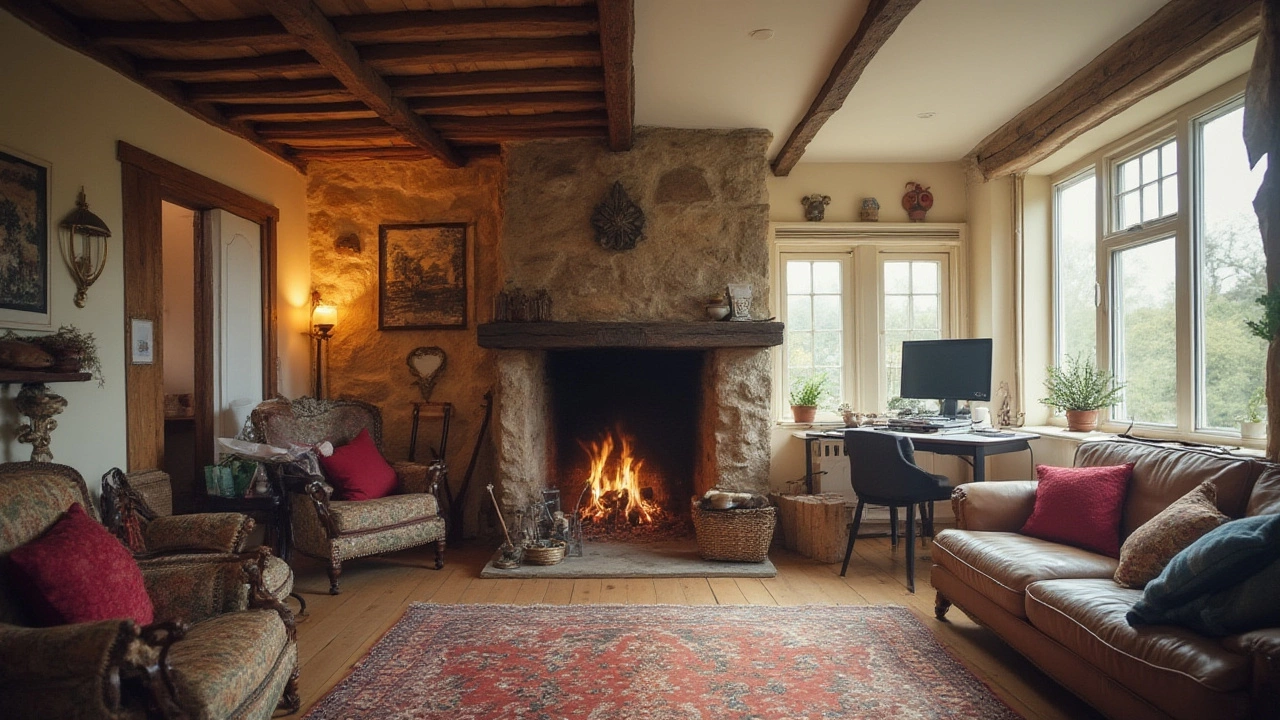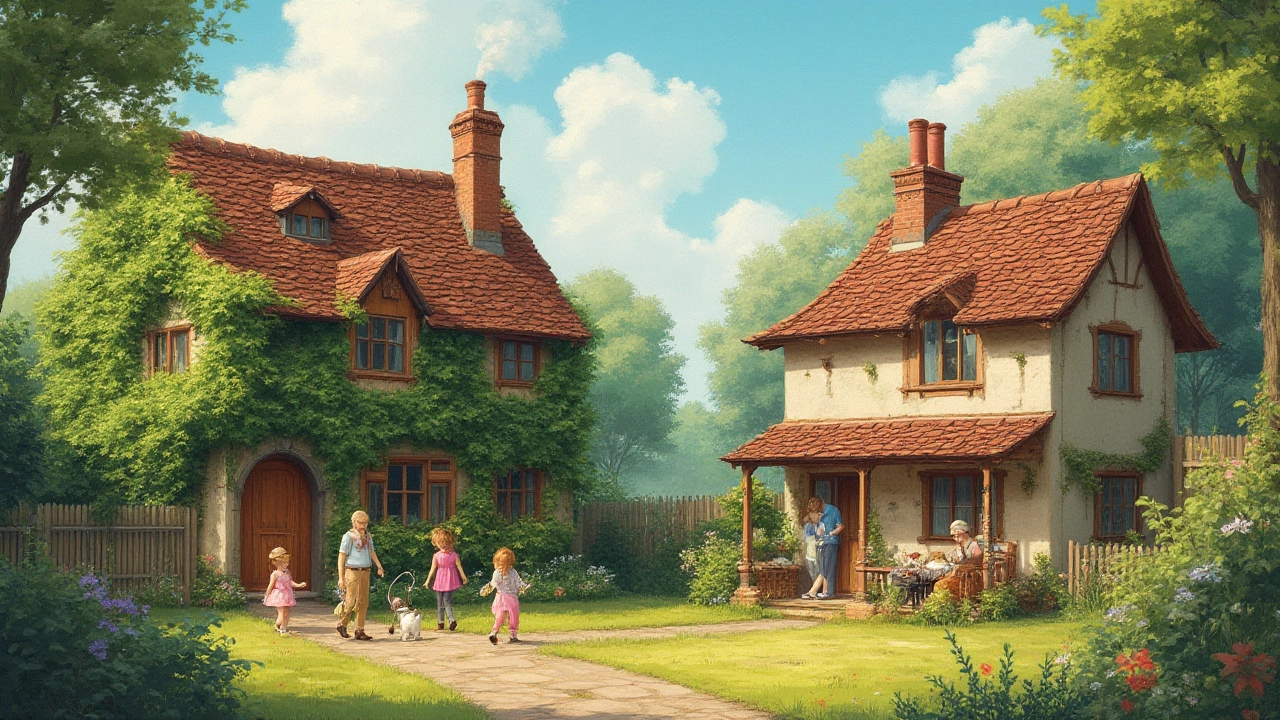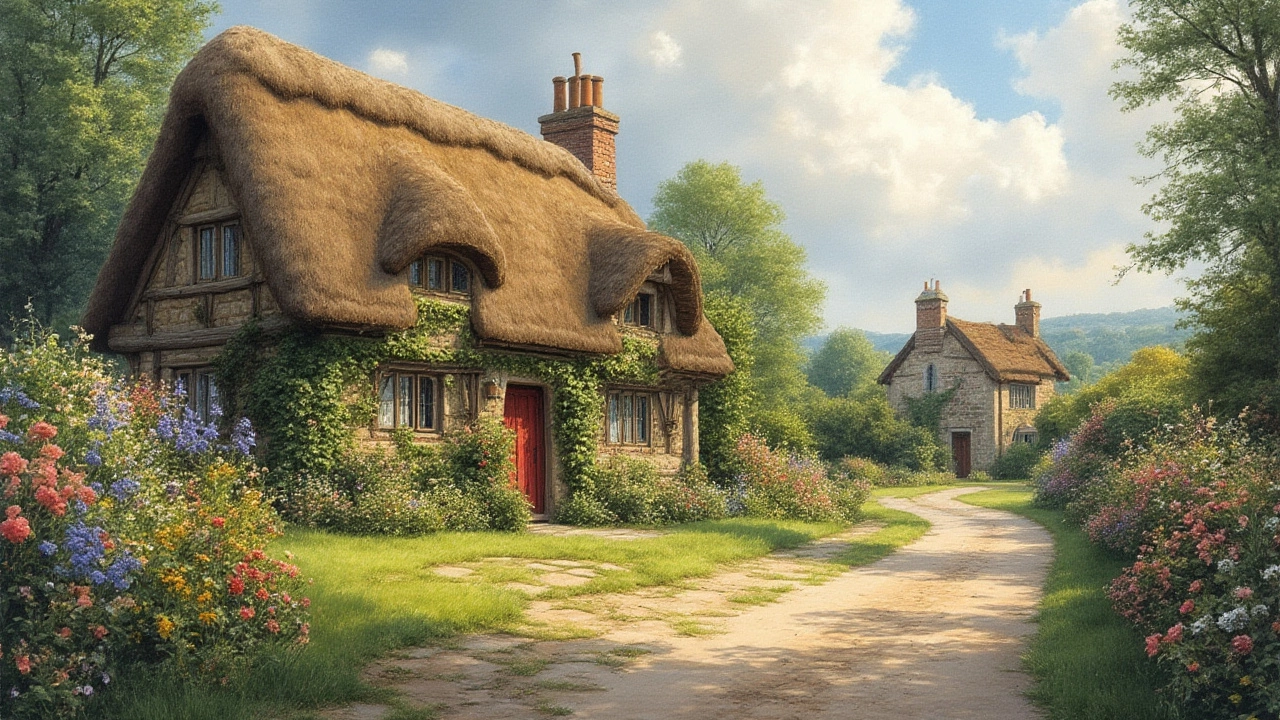Picture this. You’re searching homes online, and you spot a compact, whitewashed home shaded under gnarled apple trees. It’s called a cottage. Three listings later, there’s another tiny house – less ivy, more clean lines, listed as a small house. Why do they sound so similar yet feel so different? This isn’t just about square footage or pretty words. The “cottage vs small house” debate touches on history, culture, and even Instagram aesthetics. Knowing the real differences helps you find a space that fits your life – whether you’re dreaming of that Thomas Kinkade coziness or something sharper and more minimalist.
The Roots: History and Cultural Images
Let’s start with where these words come from. The word “cottage” pops up in English as far back as the Middle Ages. Back then, a cottage was a small, rural house for folks working the land. Cottages came with garden plots – part of the deal – and they were all about function. No fancy trim, just shelter and a hearth. By the 1800s, the English loved their country cottages so much that even the wealthy started faking the look. Queen Victoria’s Balmoral estate? Cottagecore before it was a hashtag. The vibe: rustic, cozy, close to nature.
Fast forward and “cottage” still carries that old-world charm – think wood beams, crooked stone walls, and fires crackling in the corner. Plenty of cottagers go for mismatched furniture, a tangle of flowers outside, maybe even chickens. The word has woven itself into the DNA of British, Irish, and even Scandinavian rural life. In Canada, the U.S., and Australia, “cottage” also means a casual vacation home near a lake or woods – the place you escape to, not your everyday four walls.
Compare that with the small house. This term is pretty literal. A small house is just a house that’s... well, small. It doesn’t shout “ye olde village life.” There’s no specific historical baggage. Small houses explode in popularity after World War II, when returning soldiers needed somewhere quick and affordable to settle their new families. Unlike cottages, small houses tend to pop up in suburbs and cities, created to squeeze more people onto a plot of land. If a cottage whispers “pastoral daydream,” a small house says “starter home” or “modern practicality.”
So, at its core, a cottage drips with history, nostalgia, and a touch of the wild. A small house? It’s all business – about efficiency and using less space. If you imagine what furniture fits inside, cottages spark a mental image: crocheted blankets, uneven wooden doors, maybe even a sheepdog curled in a corner. Small houses? They’re more likely to feature convertible sofas, built-in bookshelves, and an IKEA kitchen that does it all.

Designs and Structure: How They’re Built (and Lived In)
The two types of homes don’t just differ in spirit—they’re built differently, too. Cottages almost always use natural materials like stone, wood, clay brick, and sometimes thatch. If the roof isn’t gently sloping or the windows aren’t a little uneven, it’s not really a cottage. The layouts tend to be less regular – rooms strung together more by necessity than by blueprint logic. Doorways may be odd shapes (watch out for knocking your head!), and windows might be tiny but thickly framed, keeping out wind and rain.
Lately, new “cottage style” homes borrow these old cues but add comfort: better insulation, large porches, and open-plan kitchens. Americans sometimes call these “storybook cottages” – a nod to fairytales. But the elements stay the same: something a bit offbeat, a bit handmade, always a link to nature. Back gardens are almost required, bursting with herbs, nasturtiums, and maybe blueberries. Some cottages (especially in England’s Lake District) are actual historical structures, hundreds of years old, upgraded with modern plumbing and electricity while the thick stone remains untouched below layers of paint.
The small house, on the other hand, is built for today’s needs. These houses range from post-war “Cape Cod” models at 900 square feet up to newer “tiny houses” at 400 square feet—and sometimes even less. While a cottage almost always stands alone, a small house can be a duplex, a part of a row, or even a modern apartment cleverly masked with house-like features. The anchors here are simplicity and efficiency: every inch is used, and the design is often super straightforward—rectangular rooms, lots of built-in storage, and low-maintenance materials. Want to see how much can fit into 500 square feet? Small house designers can show you with a slide-away bed, a stacked washer-dryer in a closet, and kitchen counters that double as desks.
Here’s a quick peek at how they tend to stack up. Check out this comparison table—real figures from a survey on typical U.S. and U.K. housing stock published in 2023:
| Feature | Traditional Cottage | Small House |
|---|---|---|
| Average Size | 800–1,200 sq ft | 500–1,100 sq ft |
| Materials | Stone, wood, brick, thatch | Modern wood, vinyl, brick, composite |
| Setting | Rural, garden or village | Urban/suburban or rural |
| Exterior Look | Gabled or thatched roof, odd windows | Straightforward, modern, repetitive |
| Year-round Living? | Often—sometimes just seasonal | Almost always year-round |
| Outdoor Space | Garden is typical, sometimes large | May have yard, balcony, or none |
| Purpose | Permanent, vacation, or rental | Permanent residence |
One thing people miss: the small house is often designed for convenience—a place to get around quickly, keep clean easily, and heat cheaply. Cottages might be more trouble (read: draftier, sometimes a pain to modernize), but they make up for it with that lived-in soul.
Here’s a quick breakdown for anyone choosing between them:
- Do you need high-speed internet, reliable heating, and close neighbors? Go small house.
- Dreaming of wildflowers, crooked beams, and a fire pit out back? That’s a cottage.
- Value storage and adaptable rooms—think guest beds hiding in drawers? Small house design shines here.
- Want character and stories behind every stone? A proper cottage can deliver, but you’ll work for it.
- If you crave a weekend getaway, the cottage often wins—especially if you like to unplug.
Fact: a 2022 report by the National Association of Realtors found that 15% of Americans looking for second homes prefer cottages specifically for their “distinctive style and relaxed feeling” compared to the sharp rise of small houses among single urban dwellers under age 35.

Lifestyle, Cost, and Practical Tips
Now, let’s talk living. Cost is a biggie. Cottages might sound rustic and humble, but old-world charm can mean high maintenance. Thatched roof? It may need replacing every 20–30 years – and craftspeople who can do it are rare (read: expensive). Even a simpler shingled cottage roof, nestled under massive trees, can mean extra debris and more upkeep. If you buy a cottage built before electricity and plumbing, get ready to invest in upgrades. Some local councils in England and Wales even require historical permissions for any renovations, slowing things down.
Small houses score on predictability. You know what you’re getting—usually a straightforward heating system, materials that are easy to clean, new appliances, and codes that make everything up to date. Resale value is more dependable, especially in cities, since the houses are built with practicality top of mind. Energy bills tend to be lower too, since a tight footprint is easier to insulate and heat. Choosing a small house often means your weekends aren’t spent repairing a 200-year-old beam or scrubbing moss from stone walls. Not as dreamy, but way easier on your wallet and time budget.
That’s not to say all small houses lack personality. Some lean fully into minimalism: white walls, smart-tech lighting, and the kind of Scandinavian design that’s all over Pinterest – think Muji meets Marie Kondo. They’re perfect if clutter drives you nuts or you like moving through daily routines at rocket speed. Just keep in mind, super tiny houses (under 500 square feet) can feel cramped – and city zoning laws vary wildly, so always check if you can park a tiny house on your dream lot.
Back to cottages – they offer a kind of escape. You aren’t just picking a house; you’re choosing a slower rhythm. Growing your own herbs, leaving muddy boots by the door, waking to birds instead of car horns. But watch out if you need lots of tech or work from home regularly—rural internet can be a nightmare unless you pay for satellite or live in a well-connected area. On the upside, vacation cottages often generate decent rental income, especially near lakes or in scenic areas (the Scottish Highlands, Ontario’s Muskoka region, Maine’s coastal belt). According to AirDNA, UK and Canadian cottages listed on Airbnb saw an average annual occupancy of 68% and grossed over $28,000 per year by 2023—especially if they boasted real wood-burning fireplaces or walking access to water.
If you want your home to be resilient to weather, a well-built small house might weather storms better. Old cottages, especially with single-glazed windows or original chimneys, aren’t always kind to those who hate the cold. Retrofitting can add thousands to your costs – but you’re preserving something unique. Cottages are for people who adore the quirks: creaking floorboards, odd alcoves, thick doors that clang rather than click. They love the story, not just the shelter.
Both types of homes have fans who rave about downsizing. In the U.S., for example, AARP reports that more than 75% of people who downsized to dwellings under 1,000 square feet (cottage or small house) “felt happier, not just lighter.” Smaller homes force you to think: What actually matters? Do you really need a gym, two home offices, and four guest bedrooms? If you’d rather use your cash for travel or hobbies, both cottages and small houses are a win.
Tips for people trying to pick:
- Tour as many as possible. Cottages each have their own eccentricities, so what looks fairytale on the outside can hide awkward layouts or more repairs than you bargained for.
- If you love tradition, look for listing keywords like “heritage”, “stone-built,” “period features,” or “country garden.”
- If you’re after modern minimalism, watch for “efficient floor plan,” “multi-use space,” and “urban-friendly.”
- Check the internet speed! Especially in rural or waterfront locations.
- Don’t forget insurance. Thatched roofs or listed properties mean higher premiums in many regions.
- Think resale: cottages in scenic areas hold value well, especially if upgraded; standard small houses resell fastest in city zones.
- Love gardening? Cottages often come with fertile, well-loved soil and room for experiments.
One last thing: Both small houses and cottages are magnets for creativity. Whether you paint the shutters red, trim your own roses, or invent clever storage hacks for sloped eaves, you end up making your home your own. The main difference comes down to style and soul. If you’re dreaming of the “cottage lifestyle”—fuzzy socks, wild gardens, and maybe writing that novel by the fire—that vibe is hard to fake in a purely practical small house. But if you want all the benefits of tiny living, minus the nostalgia, nothing beats a smart and snug modern dwelling. Just be honest about what you need, and let the history—or the efficiency—guide you home.
